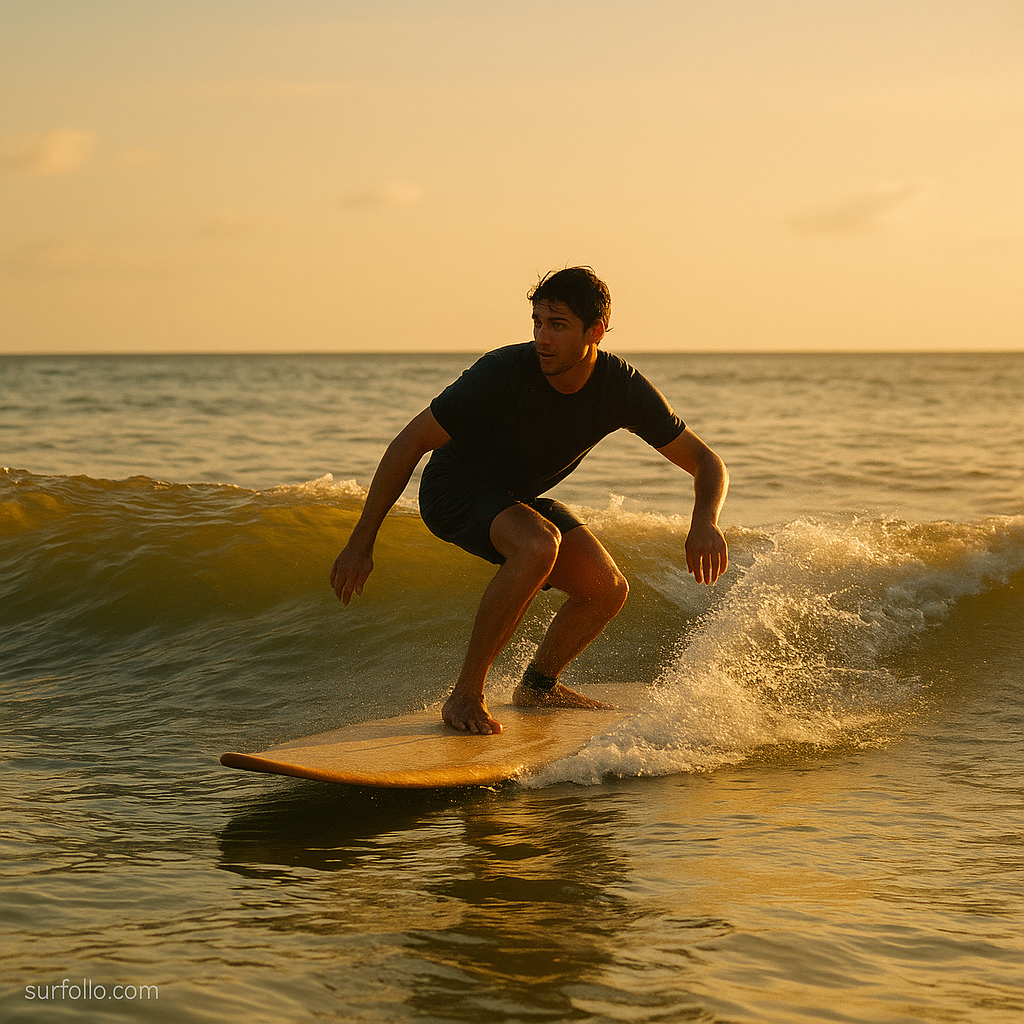
Not every surf session is about chasing overhead barrels. Some of the best days in the water come when the waves are smaller — playful, glassy, and perfect for refining your technique. Learning to surf smaller waves with confidence not only builds consistency but also sharpens your fundamentals, improves balance, and deepens your connection to the ocean.
Whether you’re a beginner learning the ropes or an experienced surfer brushing up on form, mastering small waves can transform your surfing altogether.
Why Small Waves Matter
Small waves may not seem as thrilling as head-high sets, but they’re the foundation of good surfing. They teach timing, positioning, and control — the three pillars that carry over into any size surf.
Smaller surf also offers:
- More wave count – You can catch dozens of waves in a single session.
- Lower risk – Perfect for experimenting with new techniques.
- Better flow practice – Ideal for working on trimming, turns, and cross-stepping.
- Increased awareness – You’ll learn to read subtle wave shapes and energy.
In short, surfing small waves gives you the freedom to make mistakes, learn quickly, and build confidence for bigger days.
Choose the Right Board
When the waves are small, your board choice can make or break your session. A high-volume board helps you paddle faster, catch waves earlier, and glide longer on softer faces.
Ideal board types for small surf:
- Longboards (8’–10’): Provide easy paddling and long rides.
- Funboards or mid-lengths: Offer a balance of maneuverability and stability.
- Fish boards: Great for intermediate surfers looking for speed on smaller, mushy waves.
Avoid boards with too little volume — you’ll struggle to catch waves and lose momentum quickly. The goal is flow, not fight.
Nail Your Positioning
Positioning is everything in small waves. Because the energy is lower, sitting too deep can cause you to miss waves entirely, while sitting too far in may have them close out before you stand up.
Tips for ideal positioning:
- Watch how waves break and adjust slightly toward the peak.
- Sit where the wave starts to steepen but not yet break.
- Stay alert — small waves can appear subtle and disappear quickly.
- Keep your board pointed toward shore and be ready to pivot fast.
Reading small surf is an art form. With practice, you’ll begin to anticipate takeoffs with precision.
Refine Your Paddling Technique
Small waves require efficient paddling — not brute strength. Because the waves have less push, you’ll need to create your own momentum.
Focus on:
- Smooth, deep strokes using your full arm extension.
- Chest lifted to reduce drag.
- Early commitment — start paddling a bit sooner than usual.
- Extra kicks with your feet to help accelerate if needed.
When you feel the wave lift the tail of your board, give a final strong stroke and pop up decisively. Hesitation often leads to missed waves.
Perfect the Pop-Up
In small waves, timing is everything. Pop up too late, and the wave fizzles out beneath you. Pop up too early, and you might nose-dive.
Practice explosive, controlled pop-ups both on land and in the water. Keep your eyes forward and stay centered over your board. Small waves reward quick, fluid motion — not power.
Use Your Weight Wisely
Smaller waves require subtle weight adjustments to maintain speed. The wave won’t push you as much, so you need to create and maintain momentum yourself.
Key tips:
- Shift weight forward slightly to keep speed on flatter sections.
- Compress and extend your knees to pump for momentum.
- Keep turns light and smooth — avoid digging your rails too deep.
- Trim high on the wave face to stay in the pocket longer.
Think of it as dancing with the wave — smooth, balanced, and in rhythm.
Generate Your Own Speed
In small surf, the wave won’t hand you speed — you’ll have to make it. This is where technique replaces power.
Ways to generate speed:
- Perform gentle pumps by shifting weight from front to back foot.
- Use your arms to guide rhythm and momentum.
- Keep your body compact — less drag equals more flow.
- Angle your takeoff slightly down the line instead of straight toward the beach.
The more efficiently you move, the more energy you’ll extract from the wave.
Read the Wave and Stay Adaptable
Small waves are constantly changing — some sections fade, others reform. Learn to read the shoulder and stay light on your feet to adjust quickly.
- Spot upcoming sections early.
- Cut back when the wave slows to stay close to the power source.
- Use the entire wave face — play with different lines and styles.
Adaptability separates confident surfers from hesitant ones. The ocean rewards flow and awareness.
Build Confidence with Repetition
Confidence doesn’t come from theory — it comes from time in the water. Use smaller days to log hours, experiment with new lines, and push your boundaries without pressure.
The more familiar you become with the ocean’s subtleties, the calmer you’ll feel even when conditions change. Remember, every pro surfer in the world built their foundation on small waves first.
Final Thoughts
Surfing smaller waves confidently isn’t about downgrading your surf — it’s about upgrading your fundamentals. It’s your chance to refine technique, improve reading skills, and rediscover why you fell in love with surfing in the first place.
Small waves are forgiving teachers. They remind you that style, flow, and joy matter far more than size. So next time the swell drops, don’t pack up your board — paddle out, relax, and ride every ripple like it’s a perfect wave.
